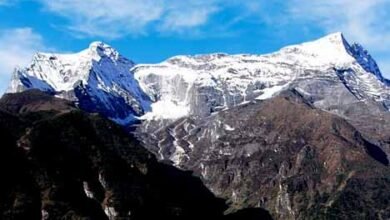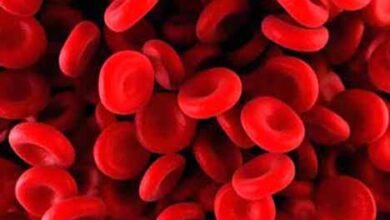
भौतिकी विज्ञान से संबंधित-121.
|
1. The shape of a rain drop is spherical due to = Surface Tension. 2. What is the triple point of water? = 273.16° Kelvin. 3. Transition ions absorb light in = Visual Field. 4. The sun appears red when it is setting? = Scattering. 5. Why did CV Raman get the Nobel Prize? = The study of the scattering of light. 6. The color of light is determined by? = Wave Length. 7. How is an ineffective wave formed? = Two waves of the same shape moving in opposite directions. 8. What principle does optical fiber work? = Total Internal Reflection. 9. Why does a pencil placed in water appear bent? = Refraction of Light. 10. Why can’t we see in fog? = Scattering of Light. 11. What is the threshold frequency? = Below which photoelectric emission is not possible. 12. Who discovered the ‘Law of Floating’ principle? = Archimedes. 13. What is the Hindi meaning of dynamo? = Conversion of mechanical energy into electrical energy. 14. Which instrument is used to measure the angular distance between two objects? = Spect. 15. Who propounded the quantum theory? = Max Planck. 16. Why did Einstein get the Nobel Prize? = Explain the photoelectric effect from quantum theory. 17. Who measured the speed of light? = Romer. 18. The angular distance between two objects is measured by = Sixty. 19. What is the wind speed measured by? = Anemometer. 20. Critical temperature:- Critical temperature of a substance is that temperature above which that substance can never be liquefied in gaseous state at higher temperature. 21. Inertia: – What is the name of the property of a body by which it opposes any change in the state of rest or uniform motion in a straight line. 22. Principal axis: – The imaginary line passing through the focus and pole falls on the circular mirror, it is called principal axis. 23. Frictional Force: – When two objects are in contact with each other, a force is applied between them, due to which there is an opposition in the motion of the object, and this force is called frictional force. The force of friction is opposite to the direction of the object. 24. If the same force is applied on a heavy and a light body for the same period, then these bodies will move with the same momentum. These bodies move according to the principle of conservation of momentum. 25. Kinetic Energy: – The ability of an object to do work due to its motion is called kinetic energy of that object. 26. Potential Energy: – The ability to do work due to change in position or shape of an object. This is called the position energy of the object. 27. Where do stars get their energy? : – Nuclear Fusion. 28. What is used as the core in an electromagnet? : – Soft Iron. 29. Which is the best conductor of electricity? : – Graphite. 30. What kind of energy is contained in a dry cell? : – Chemical. =========== ============= =========== 1. वर्षा की बूंद का आकार किसके कारण गोलाकार होती है? = पृष्ठ तनाव (surface tension). 2. पानी का त्रिगुणात्मक बिंदु कितना होता है? = 273.16° केल्विन. 3. संक्रमण आयन किसमें प्रकाश को अवशोषित कर लेते हैं? = दृश्य क्षेत्र. 4. अस्त होते समय सूर्य लाल दिखाई देता है? = प्रकीर्णन के कारण. 5. सी० वी० रमन को नोबेल पुरस्कार किसलिए मिला? = प्रकाश के प्रकीर्णन के अध्ययन के लिए. 6. प्रकाश का रंग निश्चित किया जाता है? = तरंग दैर्ध्य द्वारा. 7. अप्रभावी तरंग कैसे बनती है? = विपरीत दिशा में चालित समान आकृति की दो तरंगों. 8. प्रकाशीय फाइबर किस सिद्धांत पर कार्य करता है? = पूर्ण आंतरिक परावर्तन. 9. पानी में रखी पेन्सिल मुड़ी हुई दिखाई क्यों देती है? = प्रकाश का अपवर्तन. 10. कोहरे में हम क्यों नहीं देख पाते हैं? = प्रकाश के प्रकीर्णन. 11. देहली आवृत्ति क्या होती है? = जिसके नीचे प्रकाश वैद्युत उत्सर्जन संभव नहीं होता. 12. ‘लॉ ऑफ फ्लोटिंग ‘ सिद्धांत की खोज किसने की? = आर्किमिडीज. 13. डायनेमो का हिंदी अर्थ क्या है? = मैकेनिकल ऊर्जा का इलेक्ट्रिकल ऊर्जा में परिवर्तित करना. 14. दो वस्तुओं के मध्य कोणीय दूरी मापन के लिए कौन-सा यंत्र प्रयुक्त होता है? = स्पैक्टैन्ट. 15. क्वांटम सिद्धांत का प्रतिपादन किसने किया? = मैक्स प्लैन्क. 16. आइंस्टीन को नोबेल पुरस्कार क्यों मिला था? = प्रकाश विद्युत प्रभाव की क्वाण्टम सिद्धांत से व्याख्या के लिए. 17. प्रकाश के वेग को किसने मापा था? = रोमर द्वारा. 18. दो वस्तुओं के बीच कोणीय दूरी किससे मापा जाता है? = षष्ठक. 19. हवा की गति किससे मापी जाती है? = एनिमोमीटर. 20. क्रांतिक ताप :- किसी पदार्थ का क्रान्तिक ताप वह ताप है जिससे अधिक ताप पर गैसीय अवस्था मे उस पदार्थ को कभी भी द्रवित नहीं किया जा सकता है. 21. जड़त्व :- किसी पिण्ड के उस गुणधर्म को क्या कहते हैं, जिससे वह सीधी रेखा में विराम या एकसमान गति की स्थिति में किसी भी परिवर्तन का विरोध करता है. 22. मुख्य अक्ष :- वह काल्पनिक रेखा जो फ़ोकस एवं पोल से गुजरते हुए गोलकार दर्पण पर पड़ती है, उसे मुख्य अक्ष कहते हैं. 23. घर्षण बल :- जब दो वस्तु एक दूसरे के संपर्क में रहते हैं तो उनके बीच एक बल लगता है जिसके कारण वस्तु के गति में विरोध होता है इस बल को घर्षण बल कहते हैं. घर्षण बल वस्तु की दिशा के विपरीत लगता है. 24. एक भारी एवं एक हल्के पिंड पर एक समान बल एक ही अवधि के लिए लगे हों तो ये पिंड एक समान संवेग से गतिमान होंगे. ये पिंड संवेग संरक्षण के सिद्धांत के अनुसार गतिमान होते हैं. 25. गतिज ऊर्जा :- किसी वस्तु में उसके गति के कारण जो कार्य करने की क्षमता आ जाती है उसे उस वस्तु की गतिज ऊर्जा कहते है. 26. स्थिति ऊर्जा :- किसी वस्तु की स्थिति या आकार में परिवर्तन के कारण जो कार्य करने की क्षमता आ जाती है. इसे वस्तु की स्थिति ऊर्जा कहते हैं. 27. तारे अपनी ऊर्जा कहां से प्राप्त करते हैं? : – नाभिकीय संलयन. 28. विद्युत चुम्बक में क्रोड के रूप में किसका इस्तेमाल होता है? : – मृदु लोहा. 29. विद्युत का सबसे अच्छा सुचालक कौन सा है? : – ग्रेफाइट. 30. शुष्क सेल में किस तरह की ऊर्जा निहित होती है? : – रासायनिक.
|





